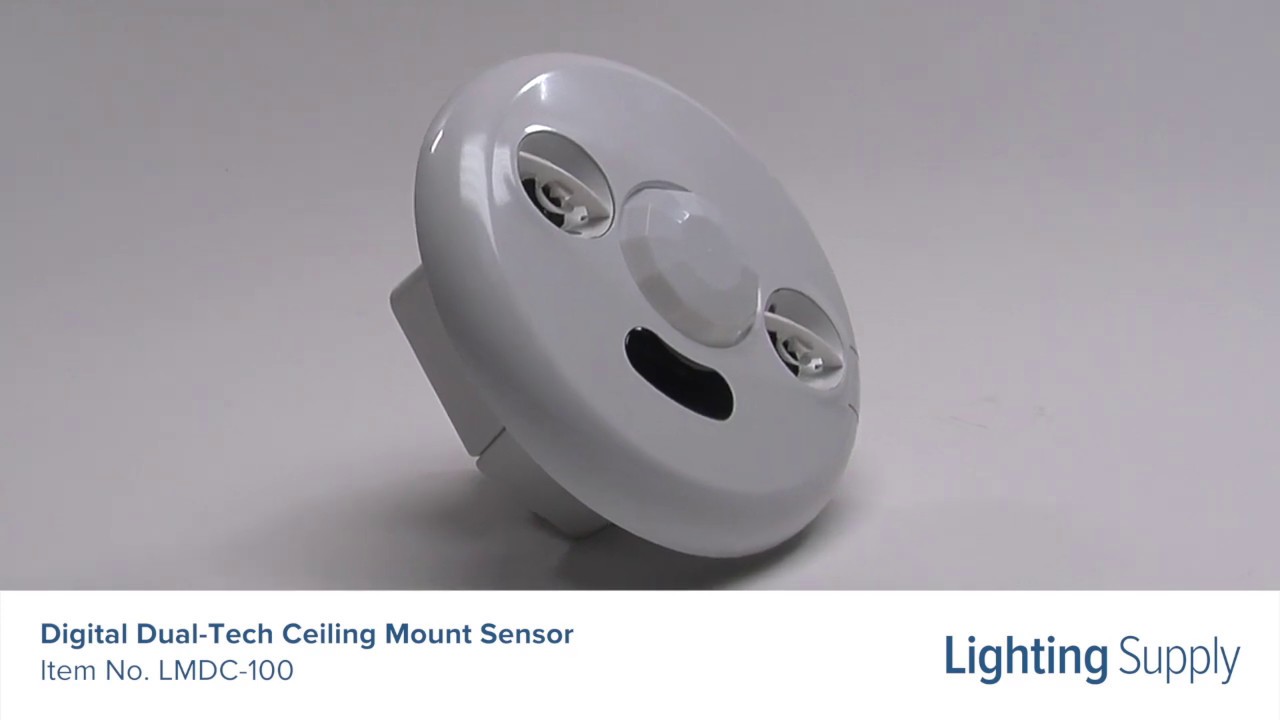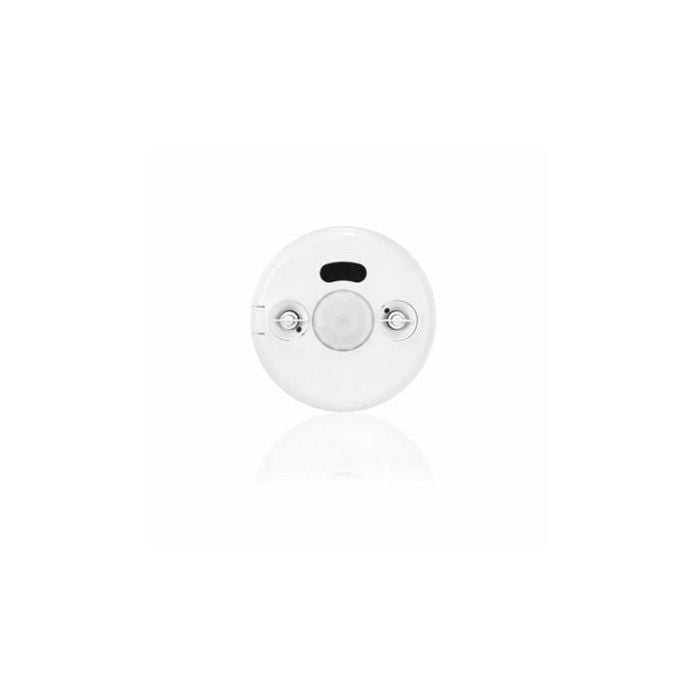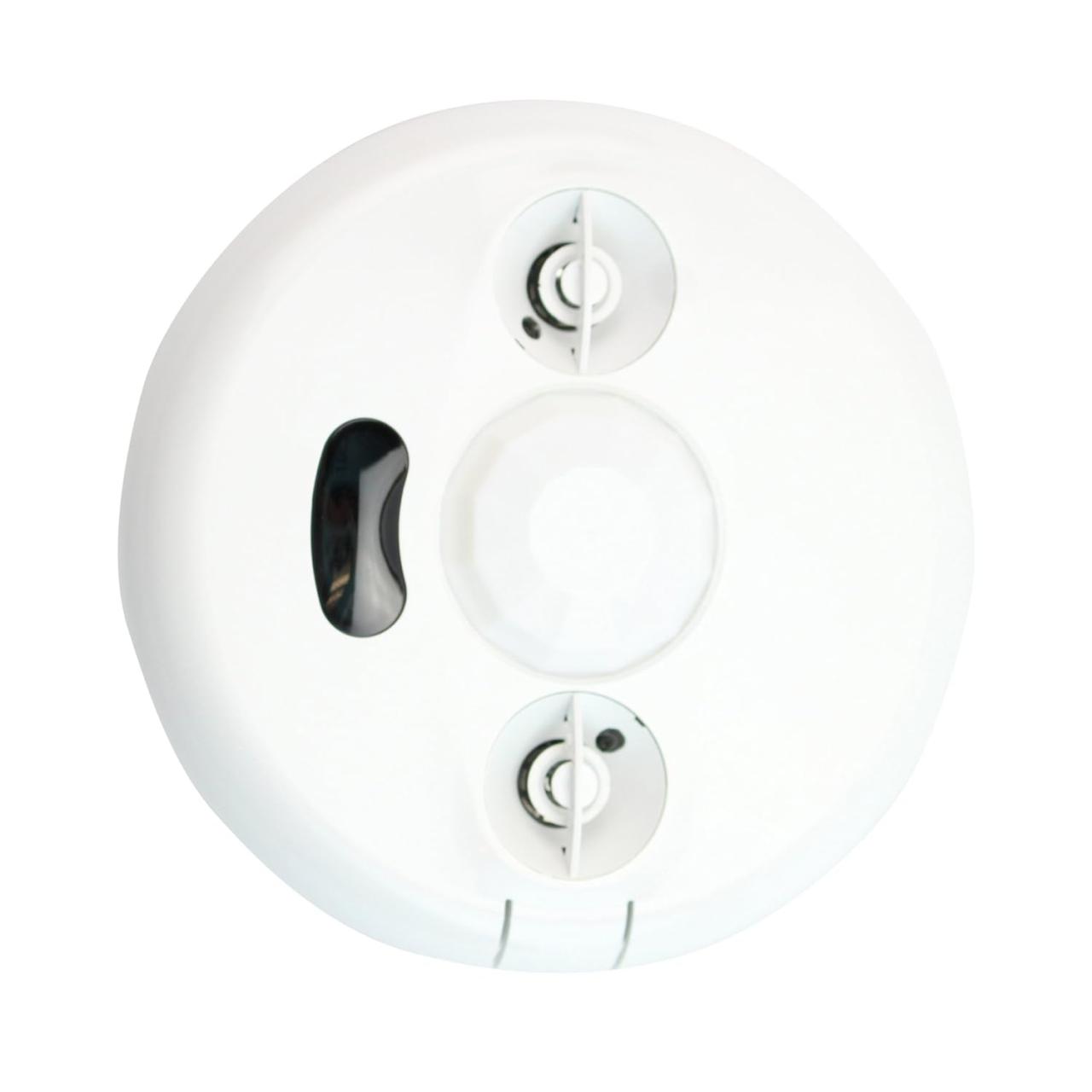Wattstopper LMD-100: Smart Occupancy Sensing
Wattstopper lmdc-100 digital dual technology ceiling mount occupancy sensor – The Wattstopper LMD-100 digital dual technology ceiling mount occupancy sensor is a game-changer in the world of energy efficiency and […]

Wattstopper lmdc-100 digital dual technology ceiling mount occupancy sensor – The Wattstopper LMD-100 digital dual technology ceiling mount occupancy sensor is a game-changer in the world of energy efficiency and building automation. This innovative device combines passive infrared (PIR) and ultrasonic technology to provide reliable and accurate occupancy detection, making it ideal for a wide range of applications.
The LMD-100’s dual technology approach offers several advantages over traditional occupancy sensors. It can detect movement in a wider range of scenarios, including those with limited line-of-sight or where people may be stationary. This versatility makes it particularly well-suited for offices, classrooms, conference rooms, and other spaces where occupancy patterns can vary.
Product Overview

The Wattstopper LMD-100 Digital Dual Technology Ceiling Mount Occupancy Sensor is a cutting-edge device designed to optimize energy efficiency in commercial and industrial spaces. It combines both passive infrared (PIR) and ultrasonic sensing technologies to accurately detect occupancy and control lighting and other electrical systems.
This sensor is a versatile solution for a wide range of applications, offering enhanced control and energy savings compared to traditional occupancy sensors.
Key Features and Functionalities
The LMD-100 boasts a comprehensive set of features that enhance its performance and user experience:
- Dual Technology Sensing: The sensor incorporates both PIR and ultrasonic technologies for reliable detection in various environments, including those with high levels of ambient light or air movement. This ensures accurate occupancy detection even in challenging conditions.
- Digital Signal Processing: The LMD-100 utilizes advanced digital signal processing to filter out false triggers and provide accurate occupancy detection. This technology minimizes unnecessary lighting activation and optimizes energy efficiency.
- Adjustable Sensitivity: The sensor offers adjustable sensitivity settings to optimize performance for different environments and occupancy patterns. Users can fine-tune the sensor’s response to ensure optimal energy savings without compromising functionality.
- Time Delay Settings: The LMD-100 allows for adjustable time delay settings to control the duration of lighting activation after occupancy is detected. This feature enables customization for different spaces and user preferences, further enhancing energy efficiency.
- Automatic Calibration: The sensor features automatic calibration capabilities, which adjust the sensor’s response to changes in environmental conditions. This ensures consistent performance over time and minimizes the need for manual adjustments.
- Remote Control: The LMD-100 can be remotely controlled through a compatible building management system (BMS) or other control systems. This allows for centralized management and monitoring of the sensor’s operation.
- Multiple Mounting Options: The sensor offers multiple mounting options, including ceiling and wall mounting, to accommodate various installation scenarios.
- Durable Construction: The LMD-100 is built with high-quality materials and construction for long-term reliability and durability in demanding environments.
Applications and Target Markets, Wattstopper lmdc-100 digital dual technology ceiling mount occupancy sensor
The Wattstopper LMD-100 is a versatile solution suitable for a wide range of applications, including:
- Commercial Buildings: Offices, retail spaces, conference rooms, and other commercial spaces can benefit from the sensor’s energy-saving capabilities and improved lighting control.
- Industrial Facilities: Warehouses, factories, and other industrial settings can leverage the LMD-100’s robust construction and reliable performance to optimize lighting and energy consumption.
- Educational Institutions: Classrooms, libraries, and other educational spaces can benefit from the sensor’s ability to create a comfortable and energy-efficient learning environment.
- Healthcare Facilities: Hospitals, clinics, and other healthcare facilities can utilize the sensor to optimize lighting and energy consumption while ensuring patient comfort and safety.
Technical Specifications
The WattStopper LMD-100 digital dual technology ceiling mount occupancy sensor is a reliable and efficient solution for controlling lighting and other electrical devices based on occupancy. This section provides a detailed overview of its technical specifications, enabling you to understand its capabilities and suitability for your specific application.
Operating Parameters
The sensor’s operating parameters determine its performance and compatibility with various environments. Here’s a breakdown of its key characteristics:
| Parameter | Value |
|---|---|
| Operating Voltage | 24 VAC/VDC |
| Current Draw | 15 mA maximum |
| Operating Temperature | 32°F to 122°F (0°C to 50°C) |
| Humidity | 0% to 90% RH, non-condensing |
Detection Range and Coverage
The sensor’s detection range and coverage area are crucial factors in determining its effectiveness. The LMD-100 utilizes both passive infrared (PIR) and ultrasonic technologies for a wider detection range and improved accuracy.
| Technology | Detection Range | Coverage Area |
|---|---|---|
| Passive Infrared (PIR) | Up to 30 feet | 120° |
| Ultrasonic | Up to 40 feet | 180° |
Other Specifications
The LMD-100 incorporates several other features that enhance its functionality and user experience.
| Specification | Value |
|---|---|
| Mounting Type | Ceiling mount |
| Time Delay Settings | Adjustable from 5 seconds to 30 minutes |
| Light Level Threshold | Adjustable from 0 to 100 lux |
| Occupancy Timeout | Adjustable from 5 seconds to 30 minutes |
| Vacancy Timeout | Adjustable from 5 seconds to 30 minutes |
| Relay Output | SPDT, 10A resistive, 5A inductive |
| Dimensions | 4.25 inches in diameter, 1.75 inches in height |
| Weight | 0.5 pounds |
Dual Technology Functionality
The LMD-100 utilizes a combination of passive infrared (PIR) and ultrasonic technology for occupancy detection. This dual technology approach provides a more comprehensive and reliable solution for various environments, addressing the limitations of each individual technology.
Advantages of Dual Technology
Dual technology occupancy sensors offer several advantages over single-technology sensors:
- Enhanced Accuracy: By combining PIR and ultrasonic sensing, the LMD-100 can detect movement in a wider range of scenarios. PIR technology is sensitive to changes in infrared radiation, making it ideal for detecting fast movements, while ultrasonic technology can detect slower movements and even subtle changes in the environment, such as breathing or a slight shift in position. This combined approach ensures more accurate occupancy detection, reducing false positives and negatives.
- Increased Reliability: Using two distinct technologies for occupancy detection increases the overall reliability of the sensor. If one technology fails to detect movement, the other technology can still provide accurate readings. This redundancy ensures that the sensor remains functional even in challenging conditions.
- Improved Versatility: Dual technology sensors are more versatile and can be deployed in a wider range of environments. PIR technology may be less effective in detecting movement behind objects or in spaces with high airflow, while ultrasonic technology can be affected by reflective surfaces. Combining these technologies overcomes these limitations, allowing the LMD-100 to perform effectively in various settings.
Comparison of PIR and Ultrasonic Technology
PIR and ultrasonic technologies have different strengths and weaknesses, making them suitable for specific scenarios:
- Passive Infrared (PIR): PIR sensors detect changes in infrared radiation emitted by moving objects. They are highly responsive to fast movements, making them ideal for detecting people walking or running. However, PIR sensors can be affected by factors such as airflow, direct sunlight, and reflective surfaces.
- Ultrasonic: Ultrasonic sensors emit sound waves and measure the time it takes for the waves to return after reflecting off objects. This technology is effective in detecting slow movements and subtle changes in the environment. However, ultrasonic sensors can be affected by reflective surfaces, which can cause false readings.
| Feature | PIR | Ultrasonic |
|---|---|---|
| Sensitivity | High sensitivity to fast movements | High sensitivity to slow movements and subtle changes |
| Range | Limited range, typically up to 30 feet | Wider range, typically up to 40 feet |
| Cost | Generally less expensive | Typically more expensive |
| Environmental Factors | Affected by airflow, direct sunlight, and reflective surfaces | Affected by reflective surfaces |
Installation and Configuration
Installing and configuring the LMD-100 sensor is a straightforward process. This section provides detailed instructions on how to physically install the sensor, connect it to your lighting control system, and customize its settings to optimize performance for your specific application.
Installation
The LMD-100 is designed for ceiling mounting and can be easily installed in a variety of locations. The installation process involves securing the sensor to the ceiling using appropriate mounting hardware, connecting it to the power supply, and wiring it to your lighting control system.
- Mounting: The sensor is typically mounted to the ceiling using screws or other suitable fasteners. Ensure that the mounting surface is strong enough to support the weight of the sensor. Refer to the installation manual for specific instructions and recommended mounting hardware.
- Power Connection: The LMD-100 requires a 24V AC power supply. Connect the sensor’s power wires to the appropriate terminals on the power supply. Ensure that the power supply is compatible with the sensor’s voltage and amperage requirements.
- Wiring: Connect the sensor’s output wires to the corresponding terminals on your lighting control system. The wiring configuration will depend on the specific system you are using. Refer to the installation manual for detailed wiring diagrams and instructions.
Connecting to a Lighting Control System
The LMD-100 is compatible with various lighting control systems, including those based on protocols such as DALI, 0-10V, and relay control. The connection process involves selecting the appropriate wiring configuration and connecting the sensor’s output wires to the control system’s input terminals.
- DALI: For DALI systems, connect the sensor’s output wires to the DALI bus. The sensor’s DALI address can be configured using a DALI programming tool.
- 0-10V: For 0-10V systems, connect the sensor’s output wires to the 0-10V input terminals on the control system. The sensor’s output voltage range can be adjusted to match the control system’s requirements.
- Relay Control: For relay control systems, connect the sensor’s output wires to the relay’s input terminals. The sensor’s output signal will trigger the relay to turn the lights on or off.
Configuration Options
The LMD-100 offers a range of configuration options to customize its behavior and optimize performance for your specific needs. These options can be accessed using a configuration tool or a dedicated interface, depending on the model and system.
- Occupancy Timeout: This setting determines the length of time the sensor will remain active after detecting movement. It can be adjusted to suit the specific application, such as shorter timeouts for areas with frequent activity or longer timeouts for areas with infrequent use.
- Sensitivity: The sensitivity setting controls how responsive the sensor is to movement. Increasing the sensitivity will make the sensor more likely to detect movement, while decreasing it will make it less sensitive. Adjusting sensitivity is crucial for optimizing performance in areas with varying levels of ambient light or noise.
- Light Level Threshold: This setting determines the minimum light level required to trigger the sensor. By adjusting this threshold, you can ensure that the sensor only activates when it is truly dark, preventing false activations in areas with ambient light.
- Walk Test Mode: This mode allows you to test the sensor’s functionality without triggering the lights. This is helpful for verifying proper installation and configuration before putting the sensor into full operation.
Advantages and Benefits

The WattStopper LMD-100 digital dual technology ceiling mount occupancy sensor offers a compelling suite of advantages that contribute to energy efficiency, cost savings, building automation, and occupant comfort. Its innovative design and advanced functionality make it an ideal choice for various commercial and residential applications.
Energy Efficiency and Cost Savings
The LMD-100 sensor’s primary function is to automatically control lighting and other electrical systems based on occupancy. By switching off lights and equipment when spaces are unoccupied, the sensor significantly reduces energy consumption, resulting in substantial cost savings.
- Reduced Energy Consumption: The sensor’s ability to automatically turn off lights when a space is unoccupied leads to a significant reduction in energy consumption, particularly in areas with frequent occupancy fluctuations. This translates into lower electricity bills and a smaller environmental footprint.
- Extended Equipment Lifespan: By minimizing the time lights and equipment are left on unnecessarily, the LMD-100 helps extend their lifespan, reducing the need for premature replacements and associated maintenance costs.
Building Automation and Occupant Comfort
The LMD-100 sensor seamlessly integrates with building automation systems (BAS), enabling intelligent control of lighting and other electrical systems based on occupancy and other environmental factors. This integration enhances building efficiency, optimizes occupant comfort, and creates a more responsive and dynamic environment.
- Automated Control: The LMD-100 sensor eliminates the need for manual control of lighting, ensuring lights are always on when needed and off when not. This automation eliminates the risk of lights being left on unnecessarily, maximizing energy savings and minimizing waste.
- Personalized Comfort: The sensor can be configured to adjust lighting levels based on occupancy and time of day, creating a personalized and comfortable environment for occupants. This feature enhances productivity and well-being, as occupants can enjoy optimal lighting conditions throughout the day.
Comparison to Traditional Occupancy Sensors
Compared to traditional occupancy sensors, the LMD-100 offers several advantages, including:
- Enhanced Accuracy: The LMD-100’s dual technology (passive infrared and ultrasonic) provides a more accurate detection of occupancy, minimizing false triggers and ensuring reliable operation.
- Wider Coverage: The sensor’s wider coverage area allows for fewer sensors to be installed, reducing installation costs and simplifying system configuration.
- Advanced Features: The LMD-100 boasts a range of advanced features, such as adjustable sensitivity, time-out settings, and integration with BAS, providing greater control and customization options.
Applications and Use Cases
The LMD-100 sensor’s dual technology design makes it suitable for a wide range of applications, offering intelligent control and energy savings in various spaces. Its ability to detect both motion and occupancy ensures accurate and reliable operation in diverse environments.
Office Environments
The LMD-100 sensor is ideal for optimizing energy consumption in offices. Its dual technology ensures accurate detection of occupancy, even when people are stationary, preventing unnecessary lighting and HVAC operation. For instance, in open-plan offices, the sensor can automatically switch off lights in unoccupied workstations, reducing energy waste. It can also integrate with HVAC systems to adjust temperature settings based on occupancy levels, further enhancing energy efficiency.
Classrooms
In educational settings, the LMD-100 sensor helps create comfortable and energy-efficient learning environments. By automatically controlling lighting and HVAC based on classroom occupancy, the sensor can minimize energy consumption while maintaining optimal conditions for students and teachers. Its accurate detection ensures that lights are only switched on when needed, reducing energy waste and creating a more focused learning atmosphere.
Conference Rooms
The LMD-100 sensor is particularly useful in conference rooms, where occupancy can vary significantly. Its dual technology ensures accurate detection of both moving and stationary people, preventing unnecessary energy consumption during meetings or when the room is empty. The sensor can automatically adjust lighting levels based on occupancy, creating a comfortable and productive meeting environment.
Other Spaces
Beyond offices, classrooms, and conference rooms, the LMD-100 sensor is applicable in various spaces where energy efficiency and intelligent control are desired. These include:
| Application | Benefits |
|---|---|
| Retail Stores | Reduced energy consumption, improved customer experience by automatically adjusting lighting levels based on occupancy. |
| Hospitals | Enhanced patient comfort and energy savings by automatically adjusting lighting and HVAC based on room occupancy. |
| Hotels | Improved guest experience and energy savings by automatically controlling lighting and HVAC in guest rooms and common areas. |
| Libraries | Created a comfortable and energy-efficient reading environment by automatically adjusting lighting levels based on occupancy. |
Integration and Compatibility: Wattstopper Lmdc-100 Digital Dual Technology Ceiling Mount Occupancy Sensor
The LMD-100 sensor is designed to seamlessly integrate with various lighting control systems, ensuring compatibility with different protocols and standards. This allows for flexible implementation in a wide range of applications.
Protocol Compatibility
The LMD-100 sensor supports a variety of industry-standard protocols, enabling seamless integration with different lighting control systems.
- DALI (Digital Addressable Lighting Interface): DALI is a widely adopted protocol for controlling lighting systems. The LMD-100’s DALI compatibility allows it to be integrated with DALI-compliant lighting control systems, providing advanced features like dimming, scene control, and fault reporting.
- 0-10V: The 0-10V protocol is another common standard for lighting control. The LMD-100 sensor can be used with 0-10V-compatible lighting control systems, allowing for simple and reliable integration.
- Modbus: Modbus is a widely used serial communications protocol for industrial automation. The LMD-100 sensor’s Modbus compatibility enables integration with building automation systems, providing data on occupancy and environmental conditions.
- BACnet: BACnet is a building automation protocol widely used in commercial and industrial applications. The LMD-100 sensor’s BACnet compatibility allows it to be integrated with BACnet-compliant building automation systems, providing data on occupancy and environmental conditions for building management.
Troubleshooting and Maintenance
The WattStopper LMD-100 sensor is designed for long-term reliability, but like any electronic device, it may experience occasional issues. This section provides guidance on troubleshooting common problems and maintaining optimal performance.
Troubleshooting Common Issues
Troubleshooting helps identify and resolve issues with the LMD-100 sensor.
- Sensor Not Detecting Movement: Verify the sensor’s power supply, ensuring it is properly connected and receiving sufficient voltage. Check the sensor’s mounting height and angle, adjusting as needed to ensure it covers the intended detection area. Ensure that no obstructions, such as furniture or plants, are blocking the sensor’s view. Verify the sensor’s sensitivity settings, adjusting them if necessary.
- Sensor Detecting Movement When None Is Present: Inspect the sensor’s surroundings for potential sources of interference, such as sunlight, drafts, or vibrating objects. If the sensor is mounted near a heat source, consider relocating it to a cooler area. Ensure the sensor is not exposed to excessive moisture or dust.
- Sensor Not Turning Off Lights: Check the sensor’s time delay settings, ensuring they are appropriate for the application. Verify the sensor’s wiring connections, particularly the load connection, ensuring they are secure and properly wired. Ensure the connected lighting fixture is functioning correctly.
- Sensor Malfunctioning: If the sensor exhibits erratic behavior or fails to function entirely, consider resetting the sensor to factory defaults. If the issue persists, contact the manufacturer for technical support.
Maintaining Sensor Performance
Maintaining the LMD-100 sensor’s performance is crucial for optimal operation and longevity.
- Regular Cleaning: Periodically clean the sensor’s lens and housing with a soft, dry cloth to remove dust, dirt, and debris. Avoid using harsh chemicals or abrasive cleaners that could damage the sensor.
- Inspection: Visually inspect the sensor for any signs of damage, such as cracks, loose connections, or corrosion. Check the sensor’s mounting for stability and ensure it is securely fastened.
- Environmental Considerations: Avoid exposing the sensor to extreme temperatures, humidity, or direct sunlight. Ensure the sensor is mounted in a well-ventilated area to prevent overheating.
Importance of Regular Cleaning and Inspection
Regular cleaning and inspection are essential for maintaining the LMD-100 sensor’s performance and extending its lifespan.
Cleaning removes dust, dirt, and debris that can obstruct the sensor’s view and affect its accuracy. Regular inspection helps identify any potential issues before they escalate, preventing costly repairs or replacements.
Final Conclusion

The Wattstopper LMD-100 digital dual technology ceiling mount occupancy sensor is a powerful tool for optimizing energy efficiency, enhancing building automation, and improving occupant comfort. Its combination of advanced technology, versatile configuration options, and ease of installation make it an ideal choice for any facility looking to modernize its lighting control systems and create a more sustainable environment.
The Wattstopper LMDc-100 digital dual technology ceiling mount occupancy sensor is a smart solution for optimizing energy efficiency in commercial and residential spaces. This sensor utilizes both passive infrared (PIR) and ultrasonic technology to detect movement and automatically control lighting and HVAC systems.
While the LMDc-100 focuses on building automation, the 2024 Jeep Wrangler technology package offers a range of advanced features for drivers, including a touchscreen infotainment system and a suite of safety technologies. Both the LMDc-100 and the Wrangler technology package demonstrate the growing importance of intelligent systems in various aspects of our lives, from building management to automotive experiences.



